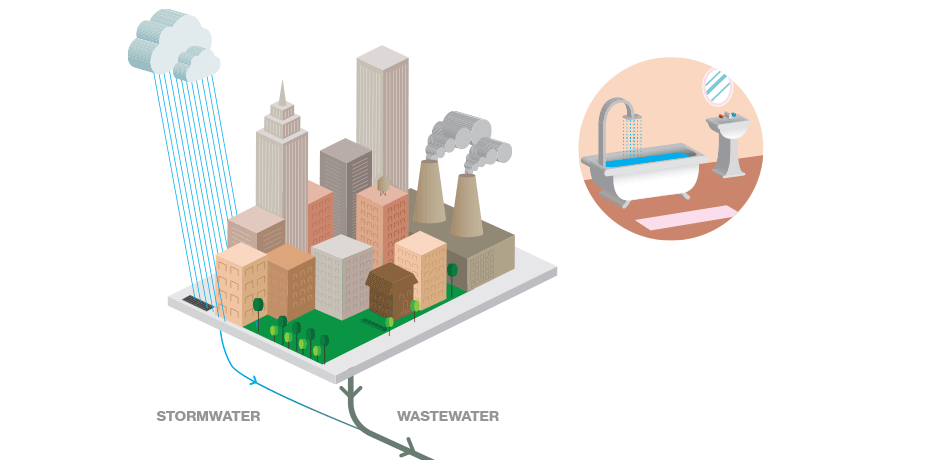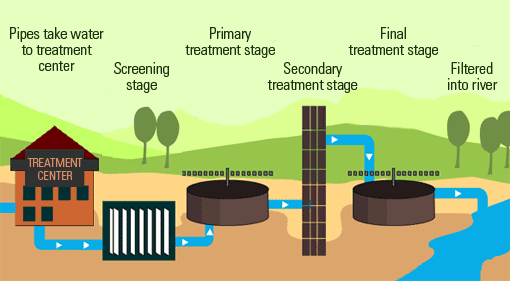Comprehensive Overview to Hazardous Waste Water Treatment Procedures
Comprehensive Overview to Hazardous Waste Water Treatment Procedures
Blog Article
Strategic Approaches to Enhance Drainage Treatment Performance and Minimize Environmental Effect
In the realm of waste water therapy, the pursuit for improved efficiency and lowered environmental impact is a continuous difficulty that requires calculated solutions. The assimilation of sophisticated therapy innovations, energy-efficient processes, source recovery strategies, boosted nutrient removal strategies, and wise monitoring and control systems stands for a multifaceted structure for dealing with these pushing issues.
Advanced Therapy Technologies
Advanced membrane layer filtering systems have actually revolutionized innovative wastewater therapy procedures, dramatically enhancing the elimination of pollutants. These ingenious systems work by compeling water through a semi-permeable membrane layer, effectively separating pollutants from the water stream. The membrane layer's microscopic pores trap contaminants such as microorganisms, viruses, and suspended solids, enabling just purified water to pass through. This innovation has actually proven to be highly effective in eliminating a wide range of pollutants, consisting of drugs, heavy metals, and natural substances, which are often challenging to get rid of with typical therapy approaches.
Moreover, membrane layer purification systems supply countless benefits over standard treatment approaches. They require much less room, create higher-quality effluent, and are a lot more immune to changes in influent water top quality. In addition, these systems are extremely flexible and can be easily integrated right into existing treatment plants or utilized as standalone systems for decentralized applications. As the need for clean water remains to climb, the fostering of sophisticated membrane purification modern technologies is important to ensure lasting and efficient wastewater treatment practices.
Energy-Efficient Processes
The assimilation of energy-efficient processes in wastewater treatment systems is crucial for maximizing resource utilization and lowering operational prices. By carrying out energy-efficient technologies, therapy plants can dramatically reduce their carbon impact and general ecological effect. One key strategy to improving power effectiveness in wastewater treatment is the use of advanced aeration systems, such as great bubble diffusers or surface area aerators, which can boost oxygen transfer efficiency and lower energy usage. In addition, integrating power recovery systems, like anaerobic food digestion for biogas production or making use of excess warm for thermal processes, can assist counter energy needs and advertise sustainability.
Additionally, enhancing procedure control and automation with the usage of advanced sensors and checking systems can boost total power performance by readjusting procedures in real-time based upon actual demand and conditions. Executing energy audits and on a regular basis checking power efficiency signs are vital methods to identify areas for renovation and track energy-saving campaigns successfully. Generally, the adoption of energy-efficient procedures in wastewater therapy not just benefits the environment yet additionally adds to long-lasting cost financial savings and functional sustainability.
Resource Recovery Approaches
With an emphasis on optimizing source application and sustainability in wastewater treatment systems, the implementation of source healing techniques emerges as a crucial facet in improving functional effectiveness. Resource recovery approaches in wastewater treatment entail the identification and removal of useful resources from the waste stream, thus transforming what was when thought about waste right into a useful asset. By implementing source recuperation methods such as nutrient elimination and healing, power generation from raw material, and the production of multiple-use water, wastewater treatment plants can decrease environmental influence while making the most of performance.

Improved Nutrient Removal Strategies
Executing innovative nutrient removal strategies is necessary for optimizing the performance of wastewater treatment systems. One of the vital techniques made use of for enhanced nutrient elimination is the process of organic nutrient removal (BNR), which entails the removal of nitrogen and phosphorus via biological procedures.

In enhancement to BNR, advanced therapy methods such as membrane bioreactors (MBRs) and built wetlands can likewise be used to improve nutrient removal effectiveness. MBRs use membranes to attain premium effluent criteria by successfully removing nutrients and suspended solids. Created wetlands resemble natural wetland processes to get rid of nutrients via plant uptake, microbial task, and sedimentation. By incorporating these advanced nutrient removal methods right into wastewater therapy systems, towns and markets can efficiently decrease nutrient contamination and secure the setting.
Smart Surveillance and Control Equipment
Making use of advanced innovation, the combination of clever surveillance and control systems reinvents the functional efficiency of wastewater treatment centers. These systems include sophisticated sensors and information analytics to great site constantly keep an eye on key criteria such as pH degrees, turbidity, dissolved oxygen, and flow prices in real-time. By accumulating and analyzing this information, drivers can get beneficial insights right into the efficiency of the treatment procedures, making it possible for proactive changes to optimize therapy effectiveness.
Smart monitoring and control systems likewise support remote tracking abilities, permitting drivers to access real-time data and control special info functions from off-site places. This remote access boosts operational adaptability and responsiveness, enabling speedy interventions in situation of system breakdowns or fluctuations in influent high quality. The anticipating upkeep capabilities of these systems assist stop tools failures and reduce downtime, eventually boosting the total reliability of wastewater treatment operations.
Final Thought
To conclude, critical approaches such as advanced treatment innovations, energy-efficient procedures, source recuperation strategies, enhanced nutrient removal techniques, and smart tracking and control systems play a crucial role in enhancing wastewater treatment efficiency and minimizing environmental impact. By implementing these techniques, wastewater treatment plants can improve their overall efficiency, reduce power intake, recover beneficial sources, and make certain conformity with ecological policies. These approaches are necessary for sustainable and effective wastewater management methods.

In verdict, calculated methods such as advanced therapy technologies, energy-efficient processes, resource recuperation techniques, enhanced nutrient elimination strategies, and wise monitoring and control systems play a critical function in enhancing wastewater treatment effectiveness and reducing ecological impact.
Report this page